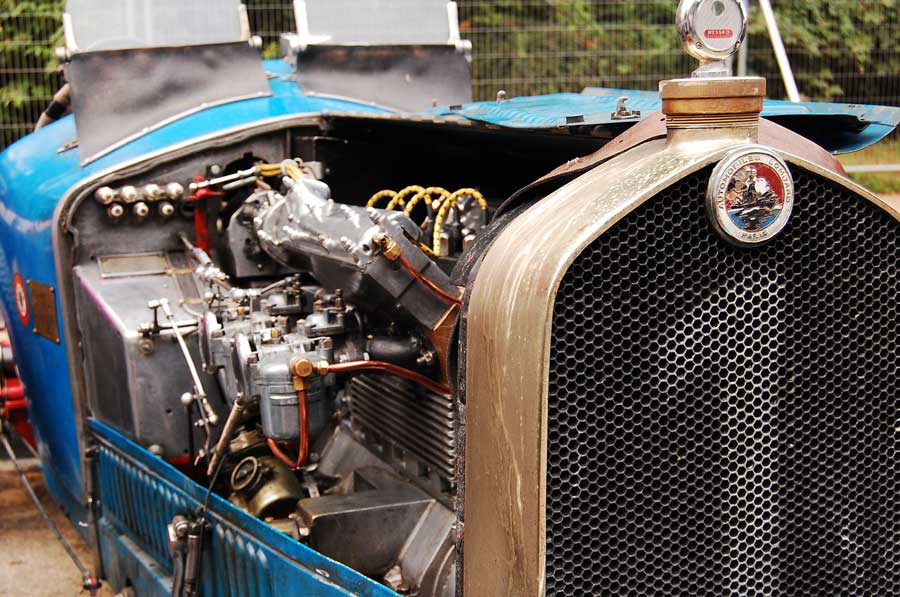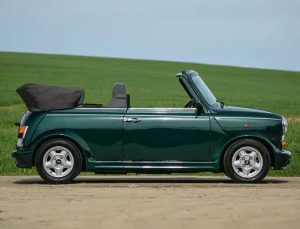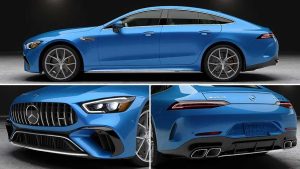Keep Your Classic Cool on Scorching Summer Drives

life in classic - classic car refrigeration
In much of the country, seasons turn fast. One week you’re waiting out the last snowdrifts before bringing your classic car back to life; a few months later, you’re climbing a hill to a show with the air conditioning on and the gauge creeping higher than you’d like. In states where summer is relentless—think Florida, Arizona, and Southern California—many owners simply park their cars until the heat breaks. That used to make sense. Today, it doesn’t have to. Modern cooling technology can keep vintage engines steady and happy even on the hottest days, and the radiator is where that control begins.
Choosing the right radiator starts with materials. Many vehicles built before the 1980s left the factory with copper/brass radiators, while most modern cars use aluminum cores with plastic end tanks. What often surprises classic owners is that replacement radiators for older models increasingly arrive in that same aluminum/plastic configuration—even when the original was copper/brass. Cost and industry consolidation are part of the reason. Mass producers largely moved away from copper/brass decades ago, and parts-store units reflect that shift.
Fortunately, the specialty market still supplies radiators that suit classic cars’ needs, both in function and appearance. Copper is an excellent heat conductor, which helps it shed temperature efficiently through the fins. Brass/copper radiators are durable, can be repaired by skilled shops, and align with the factory look many enthusiasts value. Aluminum brings a different set of strengths: it’s lighter and, when used in performance applications, often arrives as a fully welded unit with robust tanks and heavy-duty cores—far tougher than the plastic-tanked aluminum radiators common in new commuter cars.
Core design is the next big variable. Traditional brass/copper cores typically use 1/2-inch tubes, and capacity increases by adding rows. The softness of copper limits tube width; wider tubes would add surface area but be too fragile. Aluminum cores, by contrast, commonly use 1-inch tubes thanks to the material’s strength. While aluminum doesn’t conduct heat as well as copper, the bigger tube and fin surface area can compensate, making real-world performance comparable when designed thoughtfully.
Fin density and tube spacing also matter. Earlier brass/copper radiators often used 1/2-inch tubes on 9/16-inch centers, with ribbon-style serpentine fins between them. By the 1980s, some OEM designs tightened tube spacing to 3/8-inch centers, which allows more tubes and more fins—typically 12–13 per inch instead of 10–11. That higher density creates more contact points between tubes and fins, improving heat transfer to the air moving across the core. Specialty builders offer high-efficiency cores that mirror this approach, and some now go tighter still—down to 5/16-inch centers—raising heat-transfer points dramatically in a stock-size package.
Multiple-pass radiators extend the idea further. By placing baffles inside the tanks, coolant can be routed through sections of the core more than once before returning to the engine, increasing the time spent shedding heat. Some factory radiators use a double-pass layout, though that puts both hose connections on the same tank. A triple-pass configuration maintains original hose locations while sending coolant across the core three times. It’s an effective way to boost cooling without changing the radiator’s footprint or the underhood look. One caveat: if your car uses an in-tank automatic transmission cooler, a triple-pass design typically requires switching to an external trans cooler.
Real-world examples show how these choices play out. An ’87 Chevrolet pickup pressed into daily shop duty started running warm on hot days with the A/C running. Inside its factory radiator, heavy mineral buildup was restricting flow—and despite its original copper/brass construction, parts-store replacements were only available in plastic/aluminum. Swapping in a new brass/copper unit with a three-row high-efficiency core solved the issue while preserving a stock appearance. Even in 90-degree weather with the air conditioning on, temperatures stabilized at normal operating levels.
On the performance side, a ’69 Chevelle SS upgraded with a 427 big-block and nearly 500 horsepower ran hotter than ideal, even with a new stock-style big-block radiator and a proper engine-driven fan. A triple-pass copper/brass radiator fixed the problem without announcing itself under the hood; the car now runs consistently at a steady temperature, with a factory look intact.
Owners who value originality have more options than ever. Specialty manufacturers can reproduce factory-style tanks that look right at a glance while hiding modern cores inside. They can also build custom radiators when off-the-shelf parts no longer exist, or when an engine swap or modernization—such as converting an early, non-pressurized system to a pressurized one—demands a different approach. From prewar pickups to ’80s muscle, every combination has a practical solution.
The takeaway: there’s no need to sit out summer. Whether you choose a high-efficiency copper/brass core, a welded aluminum performance unit, or a triple-pass design tailored to your car, the right radiator can tame heat, protect your engine, and keep you enjoying the road—even when the sun is at its fiercest.
Protect your classic with a custom car cover from Cover Company.







